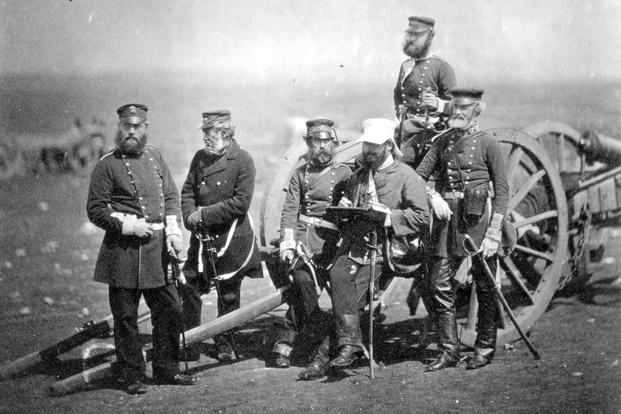There’s no doubt that Amish communities in America have a distinctive look. Amish men wear a long, flowing, ZZ-Top-level beard that can make other hirsute pursuits just look pitiful in comparison. While they may not be the only ones sporting long, long whiskers these days, they’re likely the only bearded men you’ll see whose mustache areas are clean shaven — and the U.S. military is the reason why.
Among devoutly Christian Amish men, sporting a beard is like living the Bible. In the days and locales where the stories in the Christian Bible take place, beards were commonplace. When a young Amish boy gets married, he stops shaving his beard area and grows a facial homage to his biblical forebears, letting everyone in the community know this boy is now a man.
But they never stop shaving the mustache area. The Amish, a form of Mennonite, have many traditions and beliefs that separate them, not just from society, but also from other Mennonite and Christian groups. One such core belief is the growing of a beard.
Ye shall not round the corners of your heads, neither shalt thou mar the corners of thy beard. – Leviticus 19:27
Another core tenet of Amish beliefs is pacifism and the rejection of military service – and the mustache is just one indicator of military service.
It used to be, anyway.
In the 1800s, British troops were actually required to wear some form of facial hair above the lip. This requirement lasted until warfare tech changed the game on the battlefields of World War I and a clean-shaven face was required to seal gas masks.
In order to separate themselves physically from those who would engage in military service (while letting the world know they were married, because the Amish don’t exchange wedding rings), they decided to grow beards but shave their lips.

It should be noted that the Amish prefer the term “nonresistance” as opposed to pacifism, because they are dedicated to avoiding confrontation in all areas of life, not just in military service.
Mustaches may not be as in vogue as they once were among military service members and regular troops are always clean shaven — almost everywhere in the western world — but still the old Amish tradition of keeping a clean upper lip lives on.
More posts from We Are the Mighty:
How a change in warfare set men’s style for almost 100 years
These are the rules NATO allies have about growing beards
The 5 best beards in military history
We Are The Mighty (WATM) celebrates service with stories that inspire. WATM is made in Hollywood by veterans. It's military life presented like never before. Check it out at We Are the Mighty.
Keep Up With the Best in Military Entertainment
Whether you're looking for news and entertainment, thinking of joining the military or keeping up with military life and benefits, Military.com has you covered. Subscribe to the Military.com newsletter to have military news, updates and resources delivered straight to your inbox.

















